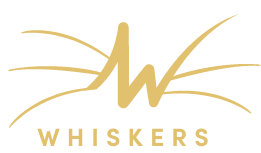A caesarean section is the surgical removal of puppies from the uterus. It is performed as an emergency when the mother is having difficulty delivering the puppies naturally.
Indications
- Dystocia (difficulty giving birth) Which fails to respond to medical treatment.
- Foetal distress.
**Please make sure you are aware of both normal and abnormal birthing signs prior to the due date. This can be discussed with one of our vets and we have a pregnancy help sheet you can take home!**
Risks
When severe dystocia is present, the risks of not performing a caesarean section are often greater than the risks of the surgery itself. However, it is important to be fully informed about the potential dangers. These are outlined below; your vet can discuss these in further detail as necessary.
Risks of the surgery for the mother include haemorrhage (bleeding), pyometra (infection within the uterus), mastitis (inflammation of the mammary tissue), wound infection and peritonitis (infection within the abdomen). The risks of a caesarean are increased when the mother is fatigued and debilitated. If the bitch has been recently fed it can affect the anaesthetic management and may cause regurgitation under the anaesthetic increasing their risk. The mother is also at risk of hypotension (low blood pressure) and therefore intraoperative intravenous fluids are advised.
A caesarean can be higher risk for the puppies compared to a normal natural birth, in part due to the anaesthetic drugs. Other factors can also contribute to higher rates of stillbirth and neonatal deaths, such as a prolonged difficult labour before surgery. After the surgery, there can be a higher risk of rejection of the puppies by the mother following a caesarean section compared to a natural birth.
The surgery
Many medications used for anaesthesia can cross the placenta and affect the puppies. The drugs used are chosen for their limited effect upon the puppies.
The pregnant bitch is given pain relief and oxygen prior to the general anaesthetic. We prefer to clip the abdomen prior to inducing anaesthesia, to reduce to the amount of time under anaesthetic. If further breeding is not planned, it is recommended to neuter the bitch at the same time to avoid a second anaesthetic at a later date.
As each puppy is delivered, the umbilical cord is clamped, and warm towels are used to rub their body and stimulate breathing. The puppies are reunited with the mother as soon as possible after surgery, for suckling and bonding. The mother will need to be supervised until she is fully awake and recovered.
Post-operative care
The post-operative checks are included in the cost of the procedure.
Pain relief needs to be given after surgery, and this raises the question of what is passed to the pups through the milk and whether it is safe. Non-Steroidal Anti-Inflammatory Drugs (NSAIDs) such as Metacam can be given when the pups have been removed. NSAIDs have not been licensed to be used in lactating bitches. This means that the pharmaceutical company have not performed the tests to show their safety. However, there are many studies from independent researchers to show that their use is justified and of minimal risk. A comfortable bitch will allow her pups to suckle and with less pain and inflammation she should make a speedy recovery. The vet will discuss this with you at the time of discharge.
It is important to prevent the bitch from licking the surgical wound and also to prevent the puppies from causing trauma to the wound, as this may result in breakdown of the wound, bruising and or the introduction of infection. You will need to regularly inspect the wound for signs of problems. The mother will also need to remain calm with limited exercise for a minimum of 10-14 days after the surgery to reduce tension and strain on the wound.
A note about The Kennel Club
The Kennel Club have produced a number of situations in which they will not register a litter which includes the following.
1) The dam has already whelped four litters
2) The dam has already reached the age of eight years at the date of whelping
3) The dam was under one year old at the time of mating, or
4) The offspring are the result of any mating between father and daughter, mother and son or brother and sister
5) The dam has already had two litters delivered by caesarean section, save for scientifically proven welfare reasons and only normally provided the application is made prior to the mating, or
6) The dam was not resident at a UK address at the date of whelping.
It is our obligation to notify them of each caesarean performed so that it can be logged.
Please contact The Kennel Club if you have any questions regarding the above.




